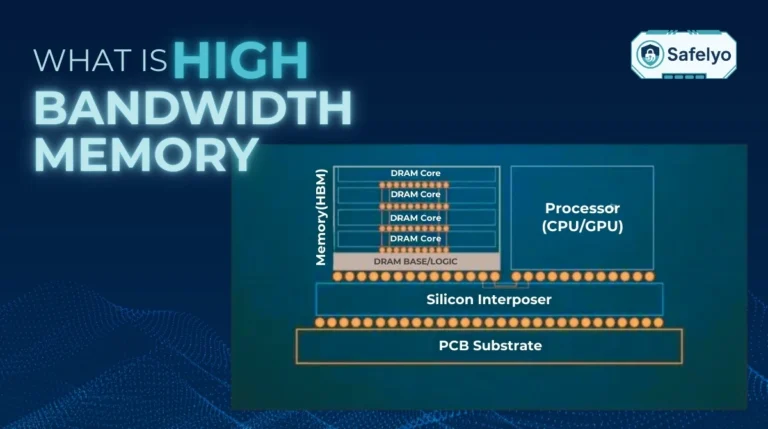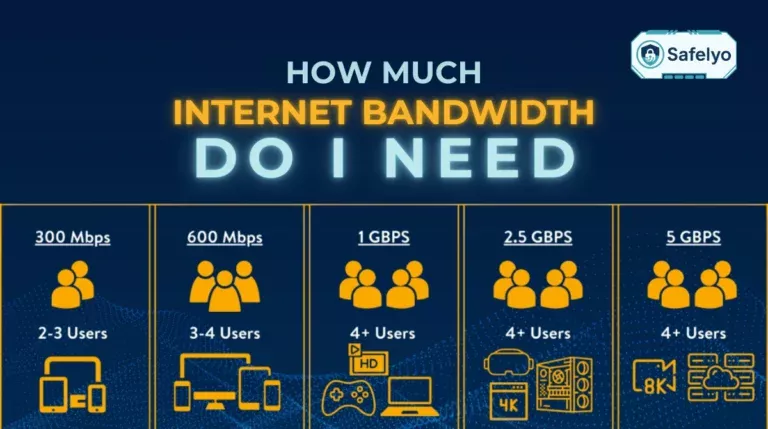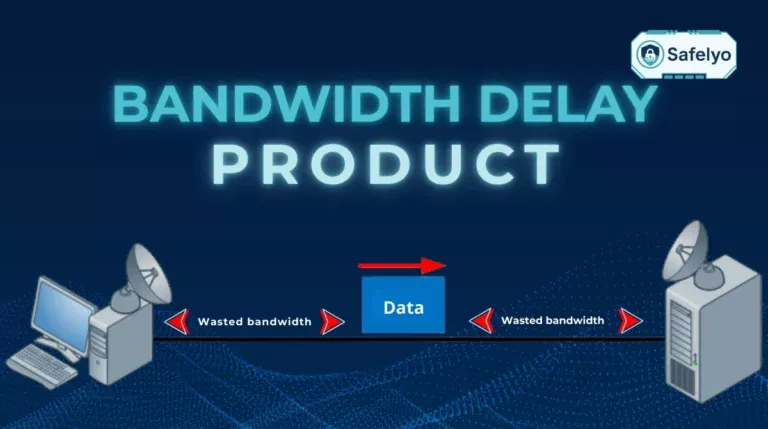Think of a rotating proxy with unlimited bandwidth not just as a tool. But as a master key that constantly changes its shape, granting your data collection projects seamless and uninterrupted access to the public web.
In the high-stakes world of web scraping, SEO monitoring, and market intelligence, a single, static IP address is a dead end. Sophisticated websites are designed to detect and block automated requests, stopping your project in its tracks. You need a way to gather data at scale without being seen.
As a data engineer who has built and scaled numerous web scraping operations, I’ve seen countless projects fail not because of bad code but because of a poor proxy strategy. A reliable rotating proxy isn’t a luxury for large-scale data gathering; it’s the fundamental engine that drives it.
In this comprehensive guide, you’ll discover:
- The critical difference between the two “unlimited bandwidth” pricing models is.
- Which providers are best for data-intensive vs. IP-intensive tasks?
- Why rotating residential proxies is the gold standard for high success rates.
- A step-by-step checklist to choose the right provider for your specific needs.
Don’t let IP blocks and confusing pricing models derail your data collection efforts. Let Safelyo guide you through the complexities of the proxy market and help you choose the powerful, cost-effective solution you need to succeed.
1. What is a rotating proxy?
At its core, a rotating proxy is a simple but powerful concept. Instead of giving you one single, static IP address that can be easily identified and blocked, it gives you access to a massive pool of different IP addresses.
This type of server automatically assigns you a new IP address from this pool for every new connection request you make, or for a set period of time. It’s also known in the industry as a backconnect proxy.
The benefit is simple: It makes it extremely difficult for websites to detect and ban your automated activity. From my experience in large-scale web scraping projects, this is the single most important feature for success. By constantly changing your digital fingerprint, you can perform tasks like:
- Large-scale data collection
- SEO monitoring from multiple locations
- Managing numerous social media or e-commerce accounts
For these tasks, rotating residential proxies are the gold standard. Cheaper datacenter proxies use IPs from commercial servers. These are easy for websites to identify. In contrast, residential proxies use real IP addresses. These addresses come from Internet Service Providers (ISPs) and are assigned to actual home devices. This makes your connection requests look like they’re coming from a genuine user, leading to a much higher success rate and far fewer blocks.
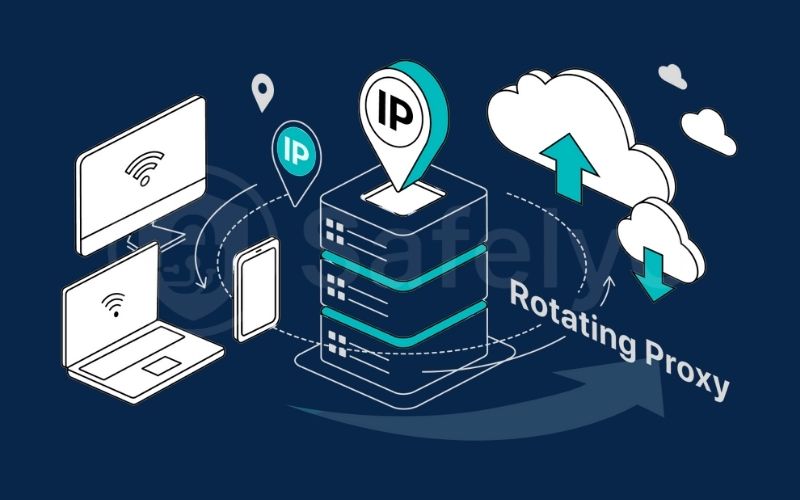
2. The most important decision: Decoding “unlimited bandwidth” pricing
Here’s the most confusing part of the proxy industry and a trap I’ve seen many new users fall into. The term “unlimited bandwidth” is a marketing minefield because it’s used to describe two fundamentally different pricing models. Choosing the wrong one for your project can lead to massive, unexpected costs. Let’s break them down so you can make an informed decision.
Model A: Pay-per-GB (Like a Mobile Data Plan)
This is the most common model among premium providers like Bright Data and Oxylabs.
- How it works: You buy a specific amount of data traffic (e.g., 50GB per month). You gain access to a massive proxy pool with millions of IP addresses. You can make as many connection requests as you want. Just ensure you stay within your data limit.
- Is the bandwidth unlimited? No, it is metered. However, your access to the rotating IP pool is essentially unlimited.
This model is best for: Tasks that are IP-intensive but not data-intensive. This means you need to make many small, separate requests from different IPs.
- Examples: Monitoring search engine rankings (SERP scraping), ad verification (checking how ads appear in different locations), or managing thousands of social media accounts. Each request uses very little data.
Model B: Pay-per-Port with Unmetered Bandwidth (Like a Home Internet Plan)
This is the model used by providers like IPRoyal and Rayobyte, and it’s what most people think of when they hear “rotating proxy with unlimited bandwidth.”
- How it works: You buy a set number of “ports” (think of them as connection pathways). You can then push an essentially unlimited amount of data through those ports. The trade-off is that the number of concurrent connections you can make is limited by the number of ports you buy, and the proxy pool might be smaller.
- Is the bandwidth unlimited? Yes. This is a true unmetered residential proxies model.
This model is best for: Tasks that are data-intensive but not necessarily IP-intensive. This means you need to download a large amount of data, but you don’t need millions of different IPs per hour.
- Examples: Scraping large images or videos, performing in-depth market research on a few hundred websites, or extracting large product catalogs.
Here’s a quick decision guide:
| You Should Choose… | If Your Project Is… | Example Use Cases |
| Pay-per-GB | IP-intensive (many small requests from unique IPs) | SERP monitoring, ad verification, and social media account management. |
| Pay-per-Port (Unlimited BW) | Data-intensive (fewer, but larger data requests) | Scraping product images/videos, large-scale market research. |
Understanding this distinction is the single most important step in choosing the right provider for your project and your budget.
3. The best rotating proxies of 2025
After testing numerous services, analyzing their pricing plans, and evaluating their performance, I’ve categorized the top providers based on the two main pricing models we’ve just discussed. This structure will help you directly compare the services that are best suited for your specific project type – either IP-intensive or data-intensive.
Here are my top picks for the best rotating proxies on the market.
For large-scale data & quality (pay-per-GB model):
These are the premium providers for projects where IP quality, targeting options, and success rate are paramount.
- Bright Data – Best for Features & Targeting. The enterprise-grade choice with the largest proxy pool and the most granular targeting options available.
- Oxylabs – Best for Performance & Reliability. A top-tier provider known for its extremely high success rates and excellent server stability.
For unlimited bandwidth & value (Pay-per-Port model):
These are the go-to providers for projects that are data-heavy and require predictable, unmetered bandwidth.
- Smartproxy – Best All-Rounder. Offers a fantastic balance of a large residential proxy pool, a very user-friendly dashboard, and excellent customer support.
- IPRoyal – Best for Flexible Pricing. Known for its unique pay-as-you-go option for residential proxies, which is great for smaller projects.
- Rayobyte – Best for Cheap Rotating Proxies. One of the most affordable and reliable providers for datacenter proxies, perfect for tasks that don’t require the stealth of residential IPs.
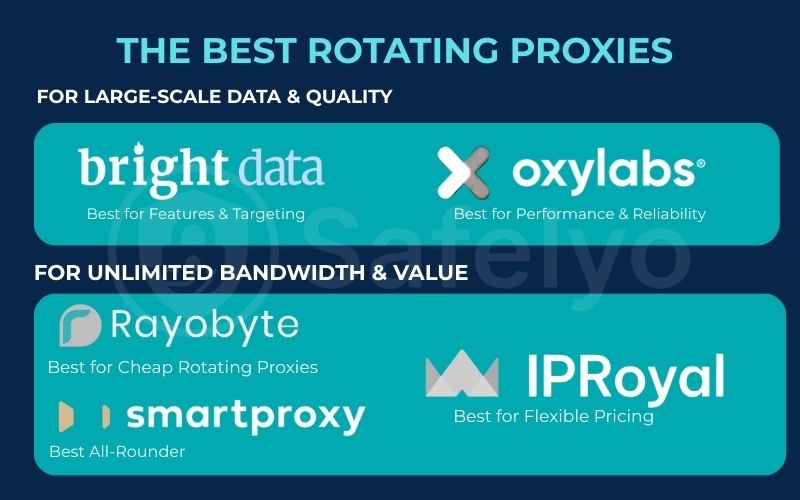
4. In-depth reviews: A look at each provider
Now we dive into the specifics. I’ve personally used these platforms for various data collection projects, and my reviews are based on hands-on experience with their dashboards, feature sets, and overall performance. We’ll start with the premium, pay-per-GB providers before moving to the unlimited bandwidth options.
4.1. #1 – Bright data
When I face a complex data collection task, I look for specific IPs. If I need IPs from a particular city or mobile carrier, Bright Data is my first choice. They provide the largest and most diverse proxy pool in the world. Their granular targeting options are unmatched in the industry. This makes them the top choice for complex, mission-critical projects.
Key features:
- Massive IP Pool: They boast an enormous network of over 72 million IPs, including high-quality rotating residential proxies and mobile proxies.
- Granular Geo-Targeting: This is their killer feature. You can target your connection requests not just by country, but by city, ZIP code, ASN (network provider), and even mobile carrier. This is incredibly powerful for tasks like ad verification.
- Powerful Proxy Manager: A sophisticated, open-source tool that allows you to manage all your proxies, create custom rotation rules, and blacklist IPs directly from your own machine.
- Excellent API Support: Their proxy with API access is well-documented and extremely powerful, allowing for deep integration into any custom web scraping application.
Pricing model
Bright Data operates on a strict pay-per-GB pricing model. It’s a premium service with premium pricing; you are paying for the quality and reliability of the IPs. This can be very cost-effective for IP-intensive tasks that use little data, but can become expensive if you need to download large files.
PROS
- Largest and most diverse IP pool on the market
- Unparalleled geo-targeting capabilities
- Powerful proxy manager and API for advanced users
- Strong commitment to ethical sourcing of IPs
CONS
- The most expensive provider on a per-gigabyte basis
- The sheer number of options can be overwhelming for beginners
Bright data – Best for features & targeting (pay-per-GB)
For many enterprise users, the choice comes down to the Bright Data vs Oxylabs debate. In my opinion, Bright Data wins on the sheer depth of its features and its surgical targeting capabilities. It is the enterprise-grade solution for mission-critical web scraping and data projects where precision and reliability are non-negotiable.
4.2. #2 – Oxylabs
While Bright Data is known for its features, Oxylabs has built a stellar reputation for one thing: Raw performance. They consistently deliver some of the highest success rates in the industry, meaning your connection requests are less likely to fail or be blocked. For large-scale projects where stability is key, this reliability is invaluable.
Key features:
- Enormous IP Pool: With over 100 million IPs, their pool of residential proxies is one of the largest available, ensuring a vast selection of unique IPs.
- High Success Rates: This is their core strength. In my own performance testing and according to many industry benchmarks, Oxylabs’ proxies consistently achieve a very high success rate (often above 99%), even on difficult target websites.
- Enterprise-Grade Support: They offer dedicated account managers and excellent 24/7 technical support, which is a major plus for business clients.
- Next-Gen Residential Proxies: An advanced feature that uses AI and machine learning to improve success rates on the most challenging targets.
Pricing model:
Similar to Bright Data, Oxylabs primarily uses a pay-per-GB model. Their pricing is highly competitive at the enterprise level, often offering better value for high-volume data usage compared to their main rival.
PROS
- Industry-leading success rates and reliability
- Massive pool of over 100 million residential proxies
- Excellent enterprise-level customer support
- Strong commitment to ethical sourcing and quality
CONS
- It can be expensive for small-scale users
- The dashboard is powerful but less feature-rich than Bright Data’s
Oxylabs – Best for performance & reliability (pay-per-GB)
In the Bright Data vs Oxylabs comparison, Oxylabs wins on performance and reliability. If your project’s success depends on achieving the highest possible success rate with minimal failed requests, Oxylabs is the top-tier choice. It’s a rock-solid, professional-grade service for demanding data collection tasks.
4.3. #3 – Smartproxy
Smartproxy masterfully bridges the gap between the high-end enterprise providers and the budget options. They provide a large pool of high-quality residential proxies, along with a more accessible pricing model. Their user-friendly dashboard enhances the experience, making them the best all-around choice for most users.
Key features:
- Large Residential Proxy Pool: With over 40 million IPs, they provide excellent global coverage.
- Fantastic User Experience: This is where they truly shine. Their dashboard is clean, intuitive, and makes proxy management incredibly simple. Setting up endpoints and managing sticky sessions is a breeze, even for beginners.
- Flexible Session Control: They offer both rotating and sticky session proxy options, allowing you to keep the same IP for up to 30 minutes, which is essential for many tasks.
- Great Documentation & Support: Their API support is well-documented, and their 24/7 live chat support is fast and helpful.
Pricing model:
Smartproxy primarily offers subscription options based on bandwidth (pay-per-GB), but they have also introduced plans that lean towards the unlimited bandwidth model for specific use cases. Their pricing is significantly more affordable than the top enterprise players, offering fantastic value.
PROS
- Excellent, user-friendly dashboard and overall experience
- Large pool of high-quality residential proxies
- Great balance of features, performance, and price
- Excellent, user-friendly dashboard and overall experience
CONS
- Not a true “Pay-per-Port” unlimited model for all plans
- Can be more expensive than pure budget options like IPRoyal
Smartproxy – Best all-rounder with a user-friendly experience (Pay-per-Port)
For the IPProxy vs SmartProxy debate, SmartProxy wins on user experience and the size of its residential IP pool. It’s the perfect choice for small businesses, marketers, and developers who need a powerful and reliable proxy service that is also simple and enjoyable to use.
4.4. #4 – IPRoyal
IPRoyal has disrupted the market with a simple but brilliant offering: pay-as-you-go residential proxies where your purchased traffic never expires. This removes the pressure of monthly subscriptions, making them an incredibly flexible and cost-effective choice, especially for smaller projects or users with inconsistent needs.
Key features:
- Non-Expiring Traffic: This is their unique selling point. If you buy 10GB of data, you can use it over a week, a month, or a year. It’s yours until it’s gone.
- Affordable Pricing: Their per-gigabyte rates for residential proxies are among the most competitive on the market.
- Good Session Control: They offer automatic rotation and flexible sticky sessions, allowing you to hold an IP for up to 24 hours.
- Diverse Proxy Types: They offer a full range, including residential, datacenter, ISP, and mobile proxies.
Pricing model:
IPRoyal offers both traditional monthly subscriptions and its famous pay-as-you-go plan. This flexibility positions them as one of the best unmetered residential proxy providers in terms of value. You only pay for what you use, eliminating the worry of your investment expiring.
PROS
- Pay-as-you-go traffic that never expires
- Very affordable pricing for residential proxies
- Flexible sticky sessions up to 24 hours
- Good variety of proxy types
CONS
- The residential proxy pool is smaller than the larger providers
- The dashboard is functional but less polished than Smartproxy’s
Iproyal – Best for flexible pay-as-you-go residential proxies (Pay-per-Port)
In the iProxy vs sSmartProxy comparison, IPRoyal wins on pricing flexibility and its non-expiring traffic model. It’s the ideal solution for freelancers, startups, and anyone who needs access to high-quality residential proxies without the commitment of a monthly subscription.
4.5. #5 – Rayobyte
While residential proxies are the best for stealth, sometimes you just need raw power and speed for less sensitive targets. Rayobyte (formerly Storm Proxies) is a long-standing provider that offers some of the best cheap rotating proxies on the market, specifically their datacenter proxies with unlimited bandwidth.
Key features:
- Unlimited Bandwidth: Their rotating datacenter proxy plans are truly unmetered. You pay for a set number of ports and can push as much data through them as you need.
- Automatic Rotation: They offer different rotation times, from every request to every 3 or 15 minutes, which is great for various scraping tasks.
- Very Affordable: Their pricing plans are extremely budget-friendly, making them accessible to almost anyone.
- ISP Proxies: They also offer ISP proxies, which are a great middle ground, offering the speed of datacenter proxies with the higher authority of an ISP IP address.
Pricing model:
Rayobyte uses a classic Pay-per-Port model for its rotating datacenter proxies. You buy a package of ports (e.g., 10 ports) for a flat monthly fee and get unlimited bandwidth.
PROS
- Truly unlimited bandwidth on rotating datacenter plans
- Extremely affordable pricing
- Simple and easy to set up and use
- Good variety of rotation options
CONS
- Datacenter proxies are more easily blocked than residential proxies
- The proxy pool is smaller than massive residential networks
- Not suitable for the most difficult or sophisticated target websites
Rayobyte – Best for cheap rotating proxies (Datacenter / Pay-per-Port)
A rotating proxy with unlimited bandwidth is a service. It automatically changes your IP address from a large pool. Importantly, it does not charge you based on the amount of data you transfer. They are the perfect choice for budget-conscious developers and data miners.
5. How to choose the right rotating proxy provider
You’ve seen our top picks, but the proxy market is vast. If you’re evaluating a provider not on our list, how do you make a smart decision? Over the years, I’ve developed a simple checklist to cut through the marketing hype and assess a provider’s true value.
Use this checklist to ensure you’re choosing the right tool for your specific project.
1. Define your data needs first.
This is the most critical step. Ask yourself: Is my project IP-intensive or data-intensive?
- IP-intensive (many small requests, like SERP scraping): You’ll likely need a Pay-per-GB model.
- Data-intensive (fewer but larger requests, like scraping images): A Pay-per-Port model with unlimited bandwidth is probably more cost-effective.
2. Choose your proxy type.
What level of stealth do you need?
- Residential Proxies: For difficult, sophisticated target websites (like social media, e-commerce sites). This is the highest standard.
- ISP Proxies: A good middle ground with high speed and good authority.
- Datacenter Proxies: For less sensitive targets where speed and low cost are the main priorities.
3. Evaluate the IP pool and geo-targeting.
Does the provider have IP addresses in the specific countries, states, or even cities you need to target? A massive proxy pool is useless if it doesn’t have IPs where your project needs them. Always check their location list.
4. Check for flexible session control.
How do you need the IPs to rotate?
- High Rotation (a new IP for every request): Best for scraping search engine results.
- Sticky Session Proxy: Essential for multi-step processes like filling out a form or completing a checkout. You need the ability to hold the same IP for at least a few minutes. Check what sticky session durations the provider offers.
5. Test the user experience and api.
A good proxy is more than just an IP address.
- Free Trial / Starter Plan: Do they offer a cheap starter plan or a free trial to let you do some performance testing before committing? I never recommend buying a large plan without testing first.
- Dashboard: Is the user-friendly dashboard intuitive? Can you easily generate proxy endpoints and track your usage?
- API Support: If you’re a developer, is their proxy with API access well-documented and easy to integrate?
6. Vet their reputation and ethics.
This is a crucial final step.
- Ethical Sourcing: What is their stated policy on the ethical sourcing of their residential IPs? Reputable providers are transparent about this.
- Recent Reviews: What are recent customer reviews saying on sites like Trustpilot or Reddit? Look for feedback on reliability and customer support.
By running any potential provider through this checklist, you can move beyond their marketing and make a decision based on a solid, data-driven foundation.
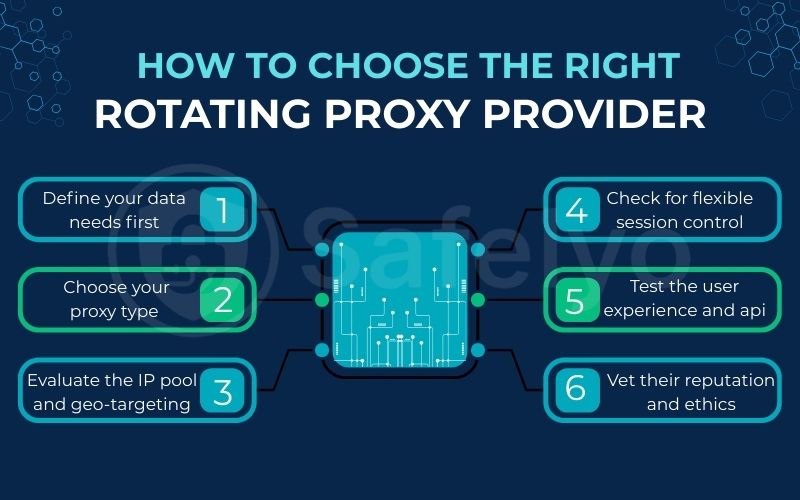
6. FAQ about the rotating proxy with unlimited bandwidth
The world of proxies is filled with technical jargon. Here are direct answers to some of the most common questions that users have when navigating this complex market.
What is a rotating proxy with unlimited bandwidth?
A rotating proxy with unlimited bandwidth is a service that automatically switches your IP address from a vast pool, and importantly, it doesn’t charge you based on the amount of data (gigabytes) you transfer. Instead, you typically pay for a set number of “ports” or simultaneous connections.
What is a backconnect proxy?
A backconnect proxy is simply another industry term for a rotating proxy. Instead of giving you a long list of individual IP addresses to manage, the provider gives you a single gateway address (the “backconnect” address). This gateway then automatically handles the proxy rotation for you on the backend.
What are sticky sessions?
A sticky session proxy is a feature that allows you to keep the same IP address for a set period of time (e.g., 1, 10, or 30 minutes). This is essential for navigating multi-step processes on a website, like completing an account registration or a shopping cart checkout, without appearing as a different user on each step.
Can I really get a rotating proxy with truly unlimited bandwidth?
Yes, but there’s a trade-off. Providers offering truly unlimited bandwidth typically use a Pay-per-Port pricing model. This means while your data transfer is unmetered, you may be limited by the number of simultaneous connections you can make. It’s cost-effective for high-data tasks but may not be ideal for tasks requiring millions of very fast, separate requests.
Which is better for web scraping, residential or datacenter proxies?
Residential proxies are almost always better for serious web scraping. Because their traffic comes from real ISP-provided IP addresses, they are much harder for sophisticated websites to detect and block. Datacenter proxies are cheaper and faster, but are easily identified and often blocked by major sites.
7. Conclusion
Choosing the best rotating proxy is not just about finding the biggest IP pool. It’s about understanding the different pricing models and matching them to your project’s specific needs. The key is to correctly identify whether your task is data-intensive or IP-intensive and choose a provider whose model aligns with that need.
Here are the key takeaways from our analysis:
- “Unlimited bandwidth” means different things. Decide if you need a pay-per-GB (for IP-intensive tasks) or a Pay-per-Port (for data-intensive tasks) plan.
- Rotating residential proxies offer the highest success rate for complex tasks like web scraping on difficult targets.
- Bright Data and Oxylabs are the top-tier choices for quality and features, while Smartproxy and IPRoyal offer excellent value and user experience.
- Always test a provider with a small plan before committing to a large, expensive subscription.
Don’t let IP blocks and captchas derail your data project. By investing in the right rotating proxy service, you gain the power to access the web’s public data reliably and at scale. Proxies are powerful tools for data collection, and now that you have the right one, you can learn more about protecting your own data. Explore the other Digital Tools & App Review guides to build a complete toolkit with Safelyo.


